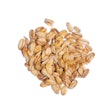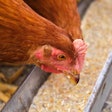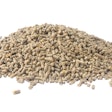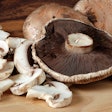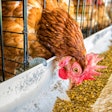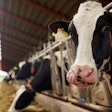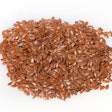
Phytogenics are well-known in Europe and some parts of the world, often under different names like essential oils, botanicals and plant extracts. They have been tested and used in poultry diets as a direct replacement to antibiotics that were previously used to promote animal performance. The recent decision to limit the use of similar antibiotics in the feeds of poultry raised in the U.S. has caused a new wave of research and enthusiasm for these rather “exotic” compounds. In fact, they have captivated the U.S. feed market to such degree that their use is expected to surpass consumption in other markets.
Although there is ample information about why to use these compounds, similar knowledge on how these products work inside the animal remains largely unavailable. As the number of phytogenic compounds and commercial mixes of them continue to increase, we need at least a basic understanding on the main mode of action of these molecules to distinguish which product is most suitable for each case, and even to decide which product to buy among several that appear to be similar in composition.
Initial attempts with phytogenics
When phytogenics first appeared on the market, they were either mixes of powdered spices or crude extracts of herbs and spices; such products are still available. Nevertheless, the lack of standardization in using such unrefined raw materials meant that quality control was difficult.
The fact that some of these compounds are highly volatile often confounded results where animals appeared not to respond to their presence in the feed. In addition, in the case of phytogenics, where a little is good, more is harmful. The best example can be seen in capsaicin, a pepper compound responsible for the hot-chili taste. A small dosage will enhance digestibility of certain nutrients, but a larger one will depress feed intake — at least in most animals, as is the case with humans, too.
Modern phytogenic products
Luckily, phytogenics offer more benefits than problems, and scientific advances in their production have created commercial products that are highly standardized, stable and provide the correct dosage for each animal age, class and species. In addition to this, modern phytogenics are often (micro) encapsulated to protect volatile ingredients from feed processing and release the active compounds in the animals’ gastrointestinal tract. Nevertheless, like any additive, phytogenics will not be found to be effective in 100 percent of the cases in which they are used. This is due to two reasons; first, they are not needed, as their action is already covered by some other compound in the feed, or the wrong product has been used while testing for the wrong response. It is, therefore, imperative to understand how these compounds work.
Mode of action
That phytogenics comprise a group of distinct and often quite different compounds offers many benefits as we can find solutions to many problems. The same fact, however, increases the degree of complexity in using these products as they all appear to work quite differently. It is interesting to consider that phytogenic compounds exist in the plants in which we have found them for a reason.
To understand this reasoning, it is imperative to accept that plants do not have an immunity system along the same lines as animals. And, to make matters even more difficult for them, they cannot turn away from their predators. Thus, bacteria, viruses, fungi and herbivore animals must be repelled by other means. Going back to the hot-chili effect of peppers, one can quickly visualize how “painful” it must be for herbivores to consume large quantities of peppers. Other compounds appear to cause similar problems to microorganisms by either killing them outright or creating an environment where it is difficult for them to live. Thus, the phytogenic compounds we have isolated from specific plants are those compounds that are responsible to protect plants, just like the immunity system and the mobility of animals protects them from their own enemies.
Read more: 5 ways phytogenics improve poultry, pig feed efficiency
But, what happens next when animals, such as poultry, consume controlled quantities of these plant “medicines”? Next, we shall examine some of the prevailing theories that are defined and documented at variable degrees.
- Digestive enchantment. We have already discussed capsaicin, and thus it is suitable to start with this very common phytogenic additive. Capsaicin is a common compound found in several phytogenic commercial mixes. It is not as volatile as other compounds, and it does not appear to affect microorganisms like bacteria in the gut — at least not directly. Research has demonstrated that capsaicin increases secretion of digestive enzymes that result in enhanced nutrient digestibility. This causes two positive effects: first, feed conversion rate improves as more nutrients become available to the animal, and second, the same nutrients are now unavailable to gut microflora who would “waste” them away, often to a pathogenic end. Thus, even indirectly, capsaicin can control gut bacterial general load.
- Immune system modulation. Here, the most well-known compound is curcumin. This is the main compound found in turmeric, which is a member of the ginger family. Surprisingly, curcumin has been found to enhance the immune response to pathogens. However, like everything that pertains to immunology, the exact mechanism by which curcumin effects this end result remains under investigation, where more research is available at the commercial level showing a promising future. As it is extremely difficult to assess the value of any immunomodulating compound in healthy animals, it is not easy to promote the use curcumin unless a farm is faced by a specific disease problem, at which time it is already too late to enhance immunity — hence the whole issue of immunity supplements. Perhaps the usage of such compounds can be best justified in the presence of viruses that are difficult to control. Here the end result is enhanced or preserved animal health and not just improved animal performance.
- Bacterial control. Most phytogenics used today aim to directly control the number and type of bacteria that end up living in the gut of animals. Such are compounds encountered in spices and herbs such as cinnamon (cinnamaldehyde), clove (eugenol), thyme (thymol), oregano (carvacrol) and garlic (anilin), to mention the most widely known ones. There are two theories how they achieve this effect. First, they can kill them outright, acting as local natural antibiotics. Second, they can make bacteria susceptible to other compounds with antibiotic activity. In the latter case, there is some evidence that certain phytogenics increase bacterial wall cell permeability causing an influx of organic acids (if present in the diet) that eventually kill the bacteria. Depending on the initial problem (overload of bacteria, presence of pathogenics), the end result will be improved animal health or improved animal performance, quite often a combination of the two at variable fractions of the whole response.
Finding the right product
With the market awash with phytogenic compounds, finding the right one is becoming difficult. In my opinion there are two major criteria that should be guiding any buying decision when it comes to phytogenics: first, quality in terms of standardization and volatility, and second, composition that should match the anticipated result, always after assessing animal condition and matching feed composition.
Comprehensive resource for antibiotic-free poultry production available
A new collection of exclusive articles, blogs, infographics and videos on antibiotic-free poultry production, by trusted WATT Global Media editors and industry experts, equip poultry producers and marketers with information to help them make critical business decisions. Purchase your copy.






